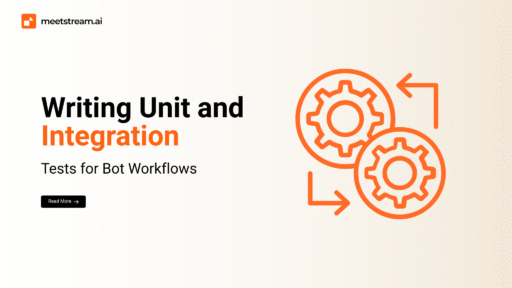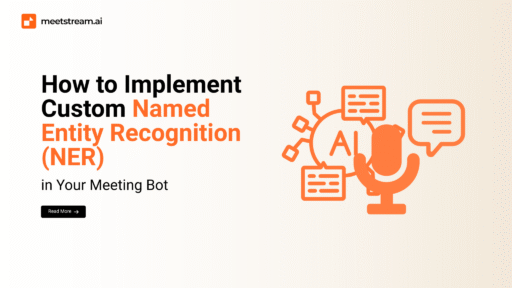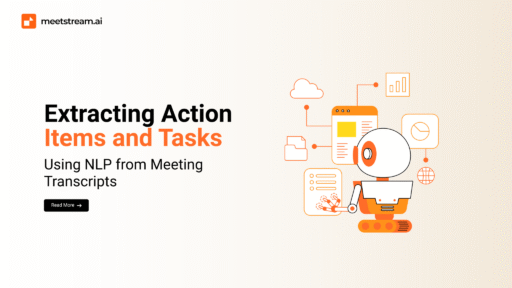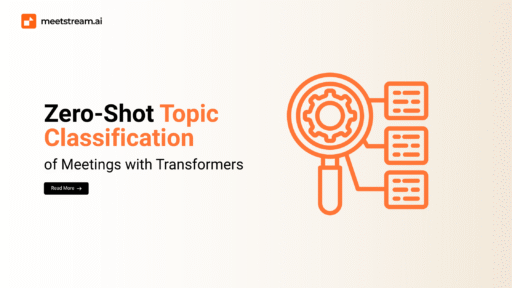In today’s fast-paced digital ecosystem, AI meeting assistants have become integral to productivity.
These bots not only summarize conversations and identify action items but also integrate seamlessly with platforms like Slack, Trello, Notion, and CRMs.
While their utility appears effortless, the underlying architecture is deeply complex — involving real-time event handling, webhook communication, third-party API interactions, and natural language understanding (NLU).
Each of these touchpoints introduces potential failure points, from missed events to misunderstood intents.
Building robust and reliable bots, therefore, isn’t just about designing clever algorithms. It’s about engineering resilience — and that begins with comprehensive testing.
Why Testing Is Crucial in Bot Development
Unlike traditional web or mobile applications, conversational bots operate in environments that are asynchronous, multimodal, and often unpredictable.
They must interpret spoken or written language, respond contextually, and coordinate with external systems — sometimes in real time. These include:
- Webhooks from video conferencing tools like Zoom or Google Meet
- Prompts and commands issued via messaging apps such as Slack or Microsoft Teams
- API responses from summarization engines, calendar tools, or task managers
Take, for example, a bot that captures meeting summaries and posts tasks to a team’s Slack channel. If a webhook fails to trigger or arrives late, the entire automation chain might collapse.
Even if all events are received on time, a failure in the intent recognition or summarization logic could result in incomplete or incorrect outputs, degrading the user experience.
Rigorous testing mitigates these risks by validating that the bot’s internal logic and external interactions work as expected.
It ensures API responses are handled correctly, integrations function reliably, and error handling is gracefully managed.
Without a testing strategy in place, every code deployment becomes a gamble. Structured test coverage — especially with unit and integration tests — minimizes regressions, accelerates development velocity, and reinforces end-user trust in your product’s reliability.
Unit vs. Integration Testing in AI Bot Workflows
Testing in software engineering generally falls into multiple layers, with unit testing and integration testing forming the foundation of quality assurance in bot development.
Unit Testing isolates individual components—functions, methods, or classes—and verifies that they work as intended under various conditions. These tests are fast, repeatable, and ideal for debugging core logic.
Example: Suppose you have a function that parses a transcript to identify action items. Unit tests should validate its output for a range of scenarios: missing due dates, vague language, or multiple assignees.
Similarly, an NLU module that maps phrases like “schedule a follow-up” or “email the summary” to internal intents must be tested against diverse linguistic variations and edge cases.
Integration Testing verifies how well multiple components interact. It simulates realistic workflows, ensuring your bot performs correctly across the full lifecycle of user interaction.
Scenario: An integration test might simulate receiving a meeting ended webhook, trigger a summarization process, and check that the final message is posted to Slack or Teams.
These tests validate the communication between services, confirm correct sequencing, and reveal hidden issues like:
- Misconfigured API endpoints
- Timeouts or delays
- Unexpected data formats
- Race conditions or concurrency issues
While integration tests are more time- and resource-intensive, they provide critical insight into real-world performance and resilience.
Testing Bots Using the MeetStream API
Testing bots in real-time environments poses practical challenges.
You can’t always rely on live meetings to trigger events, nor can you coordinate participants every time you want to run a test. That’s where MeetStream.ai excels.
MeetStream offers a sandboxed, developer-focused testing platform that allows bots to interact with simulated meetings, webhooks, and synthetic transcripts — all without human intervention.
Key Capabilities:
- Simulate the start and end of meetings
- Trigger webhooks directly from CI pipelines
- Access structured mock transcripts and summaries
- Replicate different meeting types and speaker dynamics
This makes it possible to validate workflows involving summarization, transcription, note-taking, and task assignment without needing real-time input from end users or external platforms.
MeetStream allows developers to focus on business logic, not test logistics. Whether you’re testing a multi-speaker discussion or a solo daily standup, you can define the scenario and validate your bot’s behavior quickly.
Because these simulations are programmable and repeatable, developers can iterate faster, catch regressions earlier, and maintain high confidence in their bots’ performance.
The APIs are CI/CD-friendly, making it easy to automate comprehensive tests as part of your deployment pipeline.
Writing Unit Tests for Core Bot Logic
To write effective unit tests, begin by identifying the most critical and reusable components of your bot’s logic. These often include:
- Text parsing utilities
- Natural language processing modules
- Response mappers and intent matchers
- Message formatters for Slack, Teams, or email
Each unit should be tested under a variety of scenarios to ensure it handles edge cases gracefully. For example, your transcript parser should be tested with:
- Empty or partially complete transcripts
- Multiple languages or colloquial phrases
- Conflicting or nested action items
Likewise, your response formatter should be tested for visual clarity, truncation handling, and adaptability to different platforms.
Choosing the Right Testing Framework
Most popular programming languages offer robust testing libraries. Examples include:
- Python: pytest, unittest, mock, httpx
- JavaScript/TypeScript: jest, mocha, chai
- Java: JUnit, Mockito
- Go: built-in testing package
Unit tests should remain deterministic and isolated from third-party systems, relying on mocks or stubs to simulate external dependencies. This keeps test results consistent and reduces flakiness.
Integration Testing Real-World Bot Flows
Integration tests connect the dots between APIs, services, and user inputs. Use mocking tools to simulate external systems like Slack, Zoom, or MeetStream.
In Python, for instance, requests-mock or httpx can intercept HTTP requests and return preconfigured payloads. This allows you to verify workflows such as:
- Receiving a webhook → Calling the summarization engine → Formatting → Posting a Slack message
- Handling errors like failed API responses, malformed payloads, or expired tokens
- Retrying failed steps, or skipping gracefully when data is incomplete
Handling the “Unhappy Path”
The best integration tests don’t just confirm the happy path — they explore what happens when things go wrong:
- What if the Slack API returns a 500 error?
- What if the webhook is malformed or missing a timestamp?
- How does your bot handle a meeting transcript with no speakers?
Simulating these scenarios builds resilience. MeetStream’s programmable API events and mock data make this process fast, repeatable, and scalable.
Integrating Bot Tests into CI/CD Pipelines
Running tests locally is important, but automating them in your CI/CD pipeline ensures that quality checks happen consistently.
Platforms like GitHub Actions, GitLab CI, CircleCI, or Jenkins allow you to trigger unit and integration tests on every push, pull request, or deployment.
A smart approach separates testing stages:
- Unit tests on every push
- Integration tests on scheduled runs or staging branches
- E2E tests on production builds or pre-release stages
MeetStream’s APIs make it easy to simulate meeting scenarios and webhooks within these pipelines — allowing full bot validation without waiting for live meetings.
Secure Configuration and Secrets Management
CI systems often require access to API keys, tokens, and environment variables. Never hardcode these. Instead, use secret managers:
- GitHub Secrets
- GitLab Environment Variables
- AWS Secrets Manager
- HashiCorp Vault
These secure integrations help you simulate production-grade environments without exposing sensitive credentials.
Also, consider including:
- Test coverage reports
- Simulated webhook dashboards
- Error logging and result summaries
These metrics help teams maintain high code quality, minimize downtime, and ship confidently.
Conclusion: Testing Is the Backbone of Bot Reliability
AI bots must deliver consistent, intelligent responses across varied environments and input conditions. Smart algorithms and sleek UX are important, but reliability is what earns user trust — and reliability begins with testing.
By writing robust unit and integration tests, you ensure your bot is not only functional but dependable. You reduce technical debt, accelerate development, and create a better experience for your users.
Ready to build bots that work at scale — and under pressure?
MeetStream.ai gives you everything you need to test with precision:
- Simulated meetings and webhooks
- Synthetic transcripts and summaries
- CI/CD integration and developer-friendly APIs
No more waiting for live meetings. No more flaky tests. Just fast, controlled, and scalable testing.Explore MeetStream.ai and start developing bots you can trust — every time they’re deployed.





